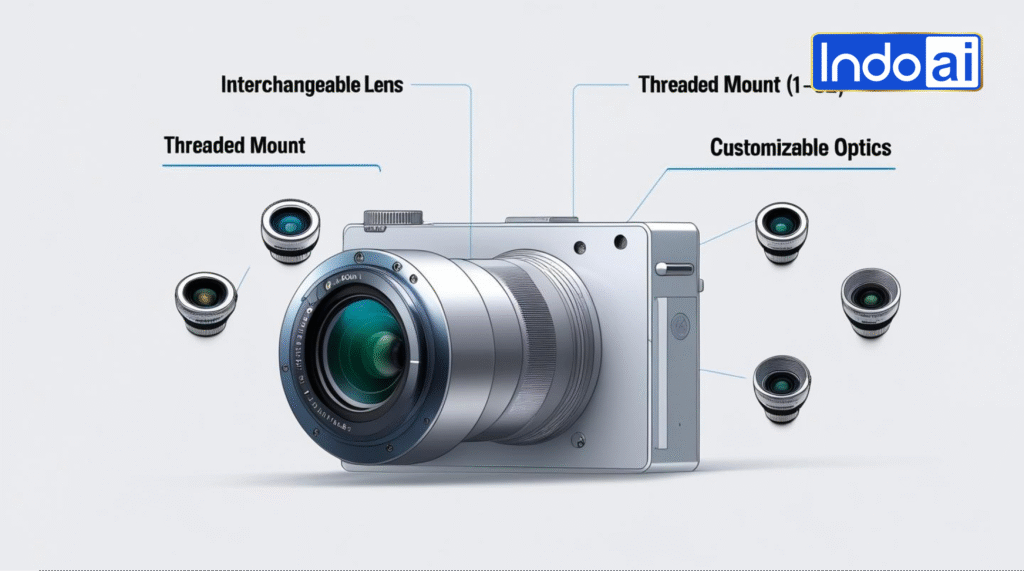C-mount cameras are a type of camera system that utilizes a standardized C-mount lens mount, allowing for the interchangeability of lenses. Here’s an overview of what C-mount cameras are, why they are used, when to use them, and where they are commonly deployed:
C-mount cameras are a type of camera system that utilizes a standardized C-mount lens mount, allowing for the interchangeability of lenses. Here’s an overview of what C-mount cameras are, why they are used, when to use them, and where they are commonly deployed:

What are C-mount Cameras?
C-mount cameras have a C-mount lens mount, which is a threaded lens mount system that is standardized. This mount enables users to attach a variety of lenses to the camera, making it versatile and adaptable to a variety of photographic or image purposes. This mount is widely found on 16 mm film cameras, CCD cameras, machine vision cameras, and microscope phototubes. C-mount lenses have a male thread that mates with the camera’s female thread. The thread has a nominal diameter of 1 inch (25.4 mm) and a pitch of 32 threads per inch (0.794 mm), and is classified as “1-32 UN 2A” in the ANSI B1.1 standard for unified screw threads.
Why Use C-mount Cameras?
Some major benefits of using a C-mount Cameras are:
Interchangeable Lenses: The primary advantage of C-mount cameras is their ability to use interchangeable lenses. This flexibility allows users to select the most appropriate lens for their specific application, whether it’s wide-angle, telephoto, macro, or other specialized lenses.
Image Quality: C-mount cameras can deliver high-quality images and videos, especially when equipped with high-resolution lenses.
Customization: Users can customize C-mount cameras by choosing lenses that best suit their requirements, making them suitable for a wide range of applications.
Versatility: These cameras are used in both industrial and non-industrial settings, making them versatile tools for various tasks.
When to Use C-mount Cameras?
Some major use-cases of using a C-mount Cameras are:
Industrial Imaging: C-mount cameras are frequently used in industrial settings for quality control, inspection, and process monitoring. Their versatility in lens selection makes them suitable for capturing precise details in manufacturing processes.
Scientific Research: Researchers often use C-mount cameras in scientific applications, such as microscopy, to capture high-resolution images and videos of specimens.
Aerial Photography: C-mount cameras can be adapted for aerial photography, particularly in small unmanned aerial vehicles (UAVs) or drones.
Documentary and Filmmaking: Some documentary filmmakers and independent filmmakers use C-mount cameras due to their lens versatility and image quality.
Surveillance: In surveillance applications, C-mount cameras can be equipped with zoom lenses for monitoring specific areas.
Where are C-mount Cameras Commonly Deployed?
Some of the major industries where C-mount Cameras are prevalent are:
Manufacturing and Quality Control: C-mount cameras are used in manufacturing environments to inspect and monitor product quality and assembly processes.
Medical Imaging: In medical fields, C-mount cameras are used in endoscopy, microscopy, and other imaging applications.
Agriculture: C-mount cameras can be used in agriculture for tasks like crop monitoring and disease detection.
Broadcasting: Some television studios use C-mount cameras for specific shots or angles.
Research and Education: Educational institutions and research facilities employ C-mount cameras for various scientific and educational purposes.
In summary, C-mount cameras are known for their flexibility and adaptability due to their interchangeable lens system. They find applications in a wide range of fields, including industry, research, agriculture, and filmmaking, where the ability to select the right lens for the job is crucial for achieving the desired results.


